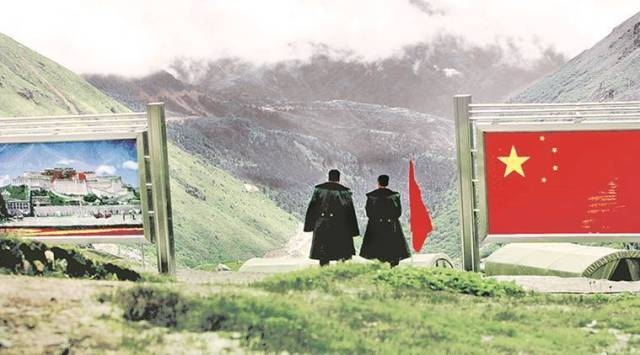China plans to expand border rail via Aksai Chin; India on watch
Aksai Chin, claimed by both India and China, has been a point of dispute between the two countries since the late 1950s, and was at the centre of the 1962 India-China war.
 China has been steadily expanding its logistics capability on its side of the border. (File)
China has been steadily expanding its logistics capability on its side of the border. (File) AT A time when India and China are locked in a border standoff with over a lakh troops stationed along the Line of Actual Control (LAC) in eastern Ladakh, Beijing has decided to accelerate its railway network to 4,000 km by 2025, cutting through the contentious Aksai Chin area close to the border.
Aksai Chin, claimed by both India and China, has been a point of dispute between the two countries since the late 1950s, and was at the centre of the 1962 India-China war.
New Delhi, which keeps a close watch on China’s infrastructure development along the border, views this as a possible force multiplier for the Chinese military, which can mobilise its forces from east to west with ease. However, Delhi also feels that the announcement must be read as a psy-ops by Beijing, after over 33 months of the border standoff.
China’s plans to upgrade its railway network from its current 1,359 km was unveiled by the Tibet Autonomous Region Development and Reform Commission.
Significantly for India, the Shigatse-Pakhuktso section of the proposed Xinjiang-Tibet Railway — which runs through Aksai Chin — will see progress by 2025, according to the plans reported in Chinese state media. “By 2025, the construction of several railway projects, including the Ya’an-Nyingchi section of the Sichuan-Tibet Railway, the Shigatse-Pakhuktso section of the Xinjiang-Tibet Railway, and the Bomi-Ra’uk section of the Yunnan-Tibet Railway will all see major progress,” said the report.
The plan is to ultimately connect 55 counties and districts, as per the 14th Five-Year Plan (2021-2025) and beyond, Chinese state media reported. This will be added by another 1,000 km of expansion by 2035, it said.
China has been steadily expanding its logistics capability on its side of the border. The latest move will significantly upgrade its capability to transport men and material from the mainland.
The Qinghai-Tibet railway line was started in July 2006, the Lhasa-Shigatse line began in 2014, and the Lhasa-Nyingchi line started operation in June 2021, taking the total length of the current railway network to 1,359 km. The 435-km Lhasa-Nyingchi line is capable of running trains at a top speed of 160 kmph.
In response, India too has expedited its efforts in constructing strategic railway lines near the China border. India’s railway footprint in the border area will be defined by four proposed lines — three in the Northeast and one in the North. The lines together add up to about 1,352 km.
The process of land acquisition has begun for the 498-km Bhanupli-Bilaspur-Manali-Leh line in Punjab, Himachal Pradesh and Ladakh. The project, estimated to cost Rs 83,360 crore, will be opened in phases. This strategic line, when complete, will be the highest railway line in the world, overtaking China’s Qinghai-Tibet line.
The other three railway lines are links to the border in Arunachal Pradesh: Missamari-Tenga-Tawang (378 km at Rs 54,473 crore); Pasighat-Tezu-Rupai (227 km at Rs 9,222 crore); North Lakhimpur-Bame-Silapathar (249 km at Rs 23,339 crore). The detailed project reports (DPR) of these lines are ready.
All these are officially designated as “strategic lines”, being constructed as per the requirements of the Armed Forces and funded by the Ministry of Defence, officials said. “The perusal of the reports and subsequent action on these lines will happen after consultations between Railways and Defence,” said a Railways spokesperson.
Plans for these broad-gauge lines are at least a decade old – they are part of 14 strategic lines identified by the defence establishment.







